On August 4, 2016, the same day I received my new Sangean DT-160CL, I popped a fresh set of CVS Max Alkaline batteries into the DT-160CL as well as into my trusted Sony SRF-39FP. The mission? To see which radio could perform longest on a set of batteries.
I set my stopwatch as I turned on both radios, tuned to the same frequency, set the volume to the same levels…and waited.
And waited. And waited. And as I waited, I posted updates.
But at last, the waiting is at an end: here are the contest’s final results.
Sangean DT-160CL: Impressive Performance
On August 9, I reported that the Sangean DT-160CL finally threw in the towel, logging an impressive 116 hours 30 minutes of operating time–!
Without a doubt, this is one of the longest run times I’ve ever experienced from an AM/FM radio with digital display.
Interestingly, the day after the DT-160CL shut down, I turned it back on, and it operated for an additional 45 minutes or so, obviously absorbing a little more voltage from rested cells. During that 45 minutes period of time, the audio and overall performance was respectable. No doubt the DT-160 shuts down before audio is terribly compromised.
Sony SRF-39FP: The Endurance King!
Amazingly, the Sony SRF-39FP kept running well beyond 116 hours. Well beyond…
By Wednesday morning–one full week from the time I began the endurance contest–the Sony SRF-39FP finally began showing signs of low-voltage: the audio had a small amount of splatter and sensitivity began to be compromised.
Unlike the Sangean DT-160CL, which clearly has a cut-off voltage, the SRF-39FP kept milking the battery for its last vestiges of power.
I decided that I would call a “time of death” for this AA battery when the Sony struggled to receive local AM stations, as well as transmission from my in-house SStran AM transmitter.
This happened approximately 163 hours and 54 minutes into its marathon run.
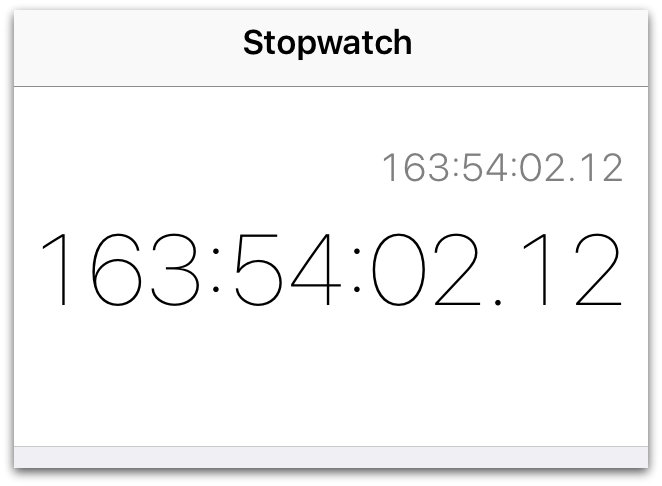
This stopwatch app tracked the full endurance test. I pressed “stop” when the Sony SRF-39FP finally gave up.
Wow, wow, wow. I simply had no idea any portable could operate almost one full week on one AA cell–!
In truth, I’m sort of relieved the ’39FP finally gave up the ghost. I was beginning to think the thing was powered by some supernatural force…
When I started this test, I thought the Sony SRF-39FP was rated for about 40-80 hours of run time on a single battery. I couldn’t remember where I got that number until I recently re-read this article from The New Yorker, which highlighted the 39FP’s role in correctional facilities:
“The SRF-39FP is the gold standard among prison radios in part because it runs on a single AA battery, and offers forty hours of listening time…”
Wait, just forty hours? Perhaps from the cheapest AA battery made…
With an advanced chemistry cell like the Duracell Quantum or Energizer Advanced Lithium series, you’ll clearly get three to four times that performance.
DX mode
And here’s the thing: I’m convinced I could’ve gotten much more time out of the SRF-39FP.
Like similar Sony portables, the SRF-39FP has a “DX/Local” switch. When set to DX, the receiver is made to deliver maximum performance.
If you’re listening to a local station, however, “Local” mode is a better choice. You’ll still be able to receive your target station, yet draw much less from the battery.
I left the Sony SRF-39FP in “DX” mode for the entire battery endurance test. Had it been in “Local” mode, I believe I’d be reporting an even longer run time. How much longer, I don’t know, but you can bet that my curiosity will soon get the best of me…I plan to do a separate endurance test to find out.
Clear choices for battery longevity
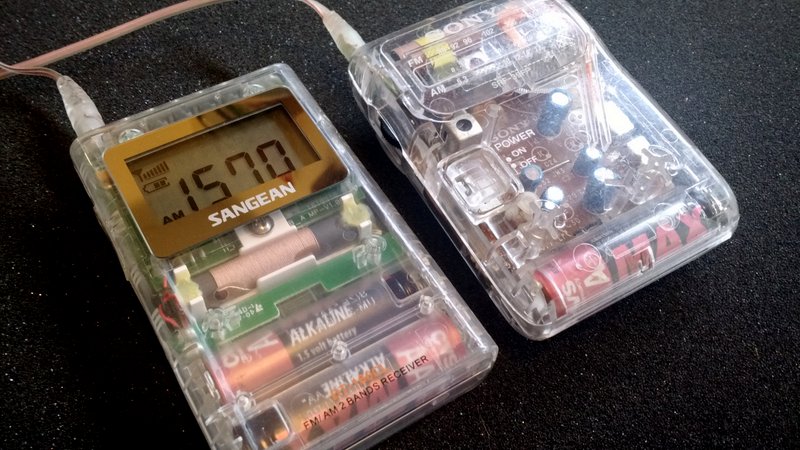 No doubt, our little test has proven that radios marketed to the prison system do offer excellent battery performance.
No doubt, our little test has proven that radios marketed to the prison system do offer excellent battery performance.
Now I’m very curious whether the standard Sangean DT-160 will offer the same battery performance as its clear-cased counterpart, the DT-160CL. The only difference in the two appears to be that one offers a clock, while the other doesn’t. I wonder if that would have any significant difference on battery life.
Additionally, the Sony SRF-39FP has shown us that analog receivers can be much more efficient than their digital counterparts. We’ve known this a long time at Ears To Our World, and which is why almost all of the radios we supply to schools in remote, rural locations are analog.
Sadly, analog radios are getting much more difficult to find these days as DSP-based receivers have become more affordable to produce.
The Sangean DT-160 is available at Amazon.com and Universal Radio. The Sangean DT-160CL (the version tested) is available through Amazon.
Click here to search eBay for the Sony SRF-39FP.
Readers: Know of any other battery-miser radios? Please comment!

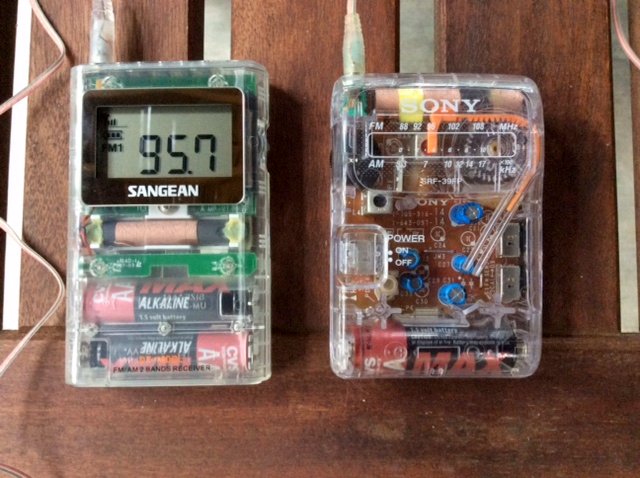
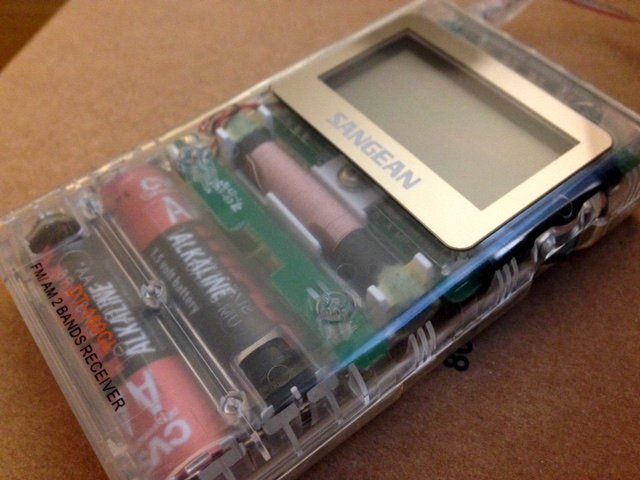
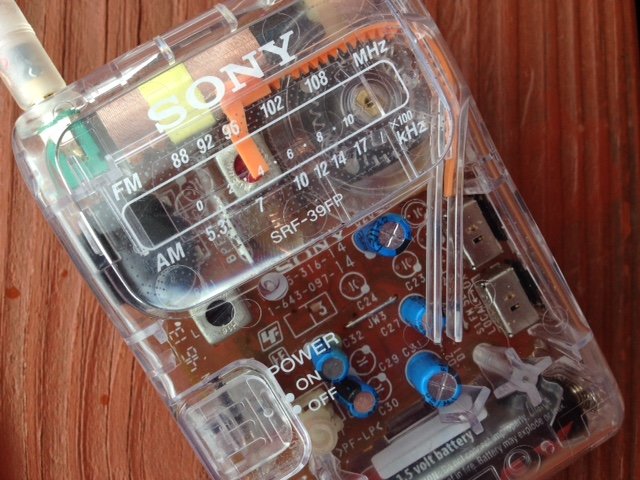
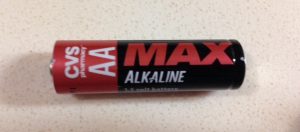
Do you still use SRF-39FP? It’d be interesting to see a video of you piping it through an external battery 3.5mm speaker to show its mediumwave receptions.
I’ve looked on ebay and I see a lot more SRF-39 than SRF-39fp. The prices are also much more reasonable. It looks like the same radio just not clear cased and sold to the public rather than prisoners. Can anyone verify if that’s the case? Or are they different on the inside?
Do a test with a lithium in the sony
Good demonstration. My first “digital” radio was a Radio Shack DX360 that uses 4 AA cells. I could only get 3 days of intermittent use running all that microprocessor baggage. I went to NiCd batteries. The annoying part was the radio would shut down by itself when the batteries got low. That feature (or defect) was a turnoff for digital. Will anyone like to try the experiment with a SDR portable? The tecsun 880 has a rechargeable Lithium battery so that will not qualify. I would like to see an SDR with ordinary common batteries.
Dear Thomas,
I have been using a Sony ICF-11 for 5-6 years now, still sold new at 50-70 euro. It’s analog and rather well featured: FM (setereo on earbuds), LW, AM, and 9 SW bands. It runs on 2 cheap AA batteries I get in low cost supermaket, for sure not the best ones. Using it at least one hour a day on the speaker, I have to change the batteries after 9-12 months. I am convinced a set of good duracell or Energizer batteries would last some more months.
I am not a radio expert, but I am quite pleased with its audio performances, specially on LW (used most of the time ) and AM, where it is vastly superior to my Tecsun PL-660. SW looks OK for what I can say from listening quite occasionaly these bands. I would be curious to see a serious review of this sony to
know how it compares with others, but I did’nt find any on the webb so far (hint?).
I am so pleased with this small radio that I recently bought a second one as a spare.
Thanks for your very interesting blog and reviews.
Francis
My first radio was the Rocket Radio made by Miniman Radio Co. of Japan. It was sold on the toy racks in grocery stores during the early 60’s. This was a crystal Radio shaped like a red and white V2 rocket. The ferrite inductor was tuned by sliding a bar that emerged from the nose of the rocket. One earphone, no batteries to wear out, AM broadcast band only. An alligator clip attached to the window screen for an antenna. From Northern Idaho I could tune in KOB Albuquerque at night. These radios still sell at collector’s prices on eBay.
There is one on eBay right now. No way I’d spend $50 on it, though.
http://www.ebay.com/itm/rocket-radio-/291845889922?hash=item43f35edf82:g:prQAAOSw65FXsI88
I read that germanium diodes of this vintage had a high failure rate over time. If I recall my rocket radio wasn’t working when I tossed it some years later.
DanH, now that brings back memories. My first radio was also a crystal. It wasn’t as cool as the rocket but living in north New Jersey I was able to listen to just about every AM station (FM wasn’t invented yet) in New York City. I used to connect the antenna wire to the finger stop on our rotary dial wall phone (raise your hand if you remember rotary dial and party lines). It didn’t take much to impress us kids back then. Thanks for bringing back a fond memory.
Oh–radios working without batteries? That still impresses me. I’m still convinced it’s magic. 🙂
Ed, I remember using the telephone finger stop for an antenna. This worked really well. I also remember party lines. There were several hours a day when the local neighbor ladies owned the party line for several hours daily. They had a schedule. When I got a little older I was using an inductance coil to listen in on them using the AUX IN jack on my 3″ reel-to-reel. No need to lift the phone receiver making a revealing “click.” I was a wicked boy.
Thomas, yes crystal radios still seem like magic. So do radiometers.
Dan, LOL I believe they were the first conference calls. I’ll bet we both read the same articles in Popular Electronics back then. I too had one of those little 3″ tape recorders with the induction coil and lapel mike. Ah, those were the days!
Thought the Rocket Radio was a little ahead of my time, I did have a crystal radio that resembled a pen. It received all of our local AM broadcasters–never needed batteries!
I am not surprised the Sony smashed it and with 1 x AA cell it’s probably the most efficient receiver on the market.
I have 2 x SRF-59 and they also take 1 x AA battery and can operate down to low voltage levels <1.0v, pretty remarkable and a testament to the engineers who designed them. I use NiMH batteries in them due to the low voltage level operation and they go for ages (never done a longevity test though).
If only Tecsun could design an analogue shortwave radio running from 1 x AA rechargeable battery that had similar operation life to the Sony SRF-59 et al. and could be recharged from a USB port that had shortwave, that would be awesome!
I’ll second that, Cap! I’d buy one in a heartbeat.